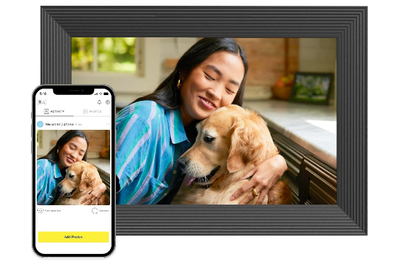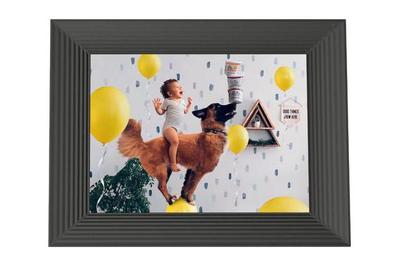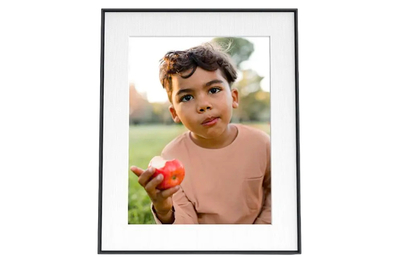A digital photo frame lets you easily display images—including beautiful travel shots and family photos—anywhere you can find an outlet, and it allows you to add new ones from anywhere.
Whether you’re giving a frame as a gift and plan to upload photos remotely or you just want a great frame for yourself, the Aura Carver is the best frame we’ve used. Its 10.1-inch display is sharp, bright, and vivid, and in our tests it was simple to set up. On top of that, it has a good-looking, horizontally oriented design, and it fills the frame with side-by-side portrait photos, too.
Our pick
The Aura Carver stands out for its stylish frame and easy setup, as well as for displaying the least amount of pillarboxing compared with other frames we tried, thanks to its side-by-side method for vertical photos.
It’s straightforward to set up and use, and loading photos and videos remotely is a breeze—the free Aura app works with Android and iOS phones, and you can add photos through a web uploader, too. From the app’s intuitive design to the frame’s pared-down interface, the Carver isn’t just for the tech savvy.
Also great
The Aura Mason was our top pick for a long time, and it’s still a great choice, particularly if you want the flexibility to display vertical (aka portrait) photos. Its 9-inch display and 4:5 aspect ratio make it easier to fit on tables and shelves in comparison with the Carver.
You can rotate the Mason to put it in either portrait or landscape orientation, but we found the Carver’s size to be a better fit for landscape photos, whereas the Mason tends to have more pillarboxing.
Also great
If you long for a digital frame that’s as large as the photos that you often find hung on a wall, the Aura Walden is an excellent option. With a 15-inch display, it’s likely larger than what you’d put on an end table, but it could also be at home on a bookshelf, especially if you plan to place it up high.
The Walden comes with a detachable stand, as well as a nail and hook to hang it on the wall, and you can set it up in either landscape or portrait orientation. Pillarboxing is noticeable on portraits when it’s hanging horizontally, so it’s probably best to dedicate this frame to one or the other type of photo to display more often.







